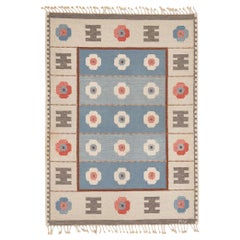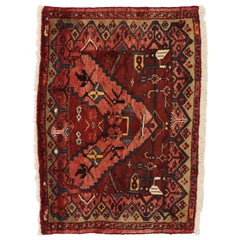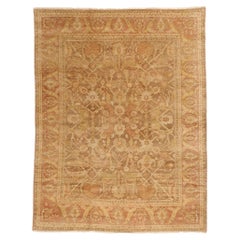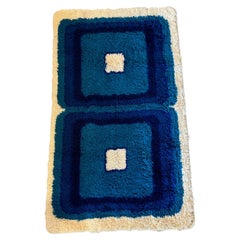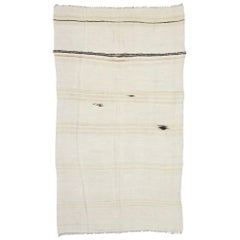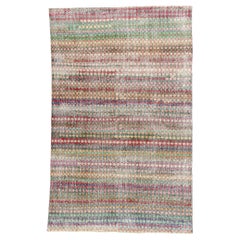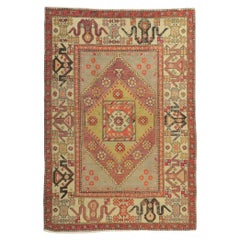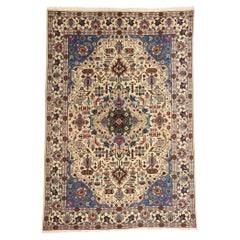Modern 1960s Rug
Mid-20th Century Swedish Scandinavian Modern Russian and Scandinavian Rugs
Wool
Mid-20th Century Persian Bohemian Persian Rugs
Wool
Mid-20th Century Turkish Kilim Turkish Rugs
Wool
Mid-20th Century Turkish Spanish Colonial Turkish Rugs
Wool
Antique 1690s Danish Scandinavian Modern Russian and Scandinavian Rugs
Wool
Mid-20th Century Turkish Modern Turkish Rugs
Wool
Mid-20th Century Turkish Mid-Century Modern Turkish Rugs
Wool
Mid-20th Century Turkish Oushak Turkish Rugs
Wool
Mid-20th Century Persian Tabriz Persian Rugs
Wool
Vintage 1960s Danish Scandinavian Modern Russian and Scandinavian Rugs
Wool
Mid-20th Century Turkish Aesthetic Movement Turkish Rugs
Wool
Mid-20th Century Persian Tribal Persian Rugs
Wool
Mid-20th Century Turkish Aesthetic Movement Turkish Rugs
Wool, Cotton
Mid-20th Century Persian Islamic Persian Rugs
Wool
Vintage 1960s Danish Russian and Scandinavian Rugs
Wool
Vintage 1960s Turkish Tribal Turkish Rugs
Wool
Vintage 1960s Turkish Tribal Turkish Rugs
Wool
Vintage 1960s Turkish Tribal Turkish Rugs
Wool
Vintage 1960s Turkish Tribal Turkish Rugs
Wool
Vintage 1960s Turkish Tribal Turkish Rugs
Wool
Vintage 1960s Turkish Tribal Turkish Rugs
Wool
Mid-20th Century Turkish Aesthetic Movement Turkish Rugs
Wool, Cotton
Mid-20th Century Turkish Aesthetic Movement Turkish Rugs
Wool, Cotton
Mid-20th Century Turkish Kilim Turkish Rugs
Wool
Vintage 1970s Czech Mid-Century Modern More Carpets
Wool
Mid-20th Century Greek Mid-Century Modern Western European Rugs
Wool
Mid-20th Century Turkish Aesthetic Movement Turkish Rugs
Wool, Cotton
Mid-20th Century Turkish Kilim Turkish Rugs
Wool, Cotton
Vintage 1960s Turkish Tribal Turkish Rugs
Wool
Vintage 1960s Turkish Tribal Turkish Rugs
Wool
Vintage 1960s Turkish Tribal Turkish Rugs
Wool
Vintage 1960s Turkish Tribal Turkish Rugs
Wool
Vintage 1960s Turkish Tribal Turkish Rugs
Wool
Vintage 1960s Turkish Tribal Turkish Rugs
Wool
Vintage 1960s Turkish Tribal Turkish Rugs
Wool
Vintage 1960s Turkish Tribal Turkish Rugs
Wool
Vintage 1960s Turkish Tribal Turkish Rugs
Wool
Vintage 1960s Turkish Tribal Turkish Rugs
Wool
Vintage 1960s Turkish Tribal Turkish Rugs
Wool
Vintage 1960s Turkish Tribal Turkish Rugs
Wool
Vintage 1960s Turkish Tribal Turkish Rugs
Wool
Vintage 1960s Turkish Tribal Turkish Rugs
Wool
Vintage 1960s Turkish Tribal Turkish Rugs
Wool
Vintage 1960s Turkish Tribal Turkish Rugs
Wool
Vintage 1960s Turkish Tribal Turkish Rugs
Wool
Vintage 1960s Turkish Tribal Turkish Rugs
Wool
Vintage 1960s Turkish Tribal Turkish Rugs
Wool
Vintage 1960s Turkish Tribal Turkish Rugs
Wool
Vintage 1960s Turkish Tribal Turkish Rugs
Wool
Vintage 1960s Turkish Tribal Turkish Rugs
Wool
Vintage 1960s Turkish Tribal Turkish Rugs
Wool
Vintage 1960s Turkish Tribal Turkish Rugs
Wool
Vintage 1960s Turkish Tribal Turkish Rugs
Wool
Vintage 1960s Austrian Russian and Scandinavian Rugs
Wool
Vintage 1960s Austrian Russian and Scandinavian Rugs
Wool
Vintage 1960s Austrian Russian and Scandinavian Rugs
Wool
Vintage 1960s Danish Russian and Scandinavian Rugs
Wool
Mid-20th Century Turkish Aesthetic Movement Turkish Rugs
Wool
- 1
- ...
Modern 1960s Rug For Sale on 1stDibs
How Much is a Modern 1960s Rug?
Finding the Right Rugs And Carpets for You
Good antique rugs and vintage rugs have made their way into homes across the globe, becoming fixtures used for comfort, prayer and self-expression, so choosing the right area rug is officially a universal endeavor.
In modern usage, “carpet” typically denotes a wall-to-wall floor cushioning that is fixed to the floor. Rugs, on the other hand, are designed to cover a specific area and can easily be moved to new locations. However, the terms are interchangeable in many parts of the world, and, in the end, it won’t matter what you decide to call it.
It’s well known that a timeless Persian rug or vintage Turkish rug can warm any interior, but there are lots of other styles of antique rugs to choose from when you're endeavoring to introduce fresh colors and textures to a bedroom or living room.
Moroccan Berber rugs are not all about pattern. In fact, some of the most striking examples are nearly monochrome. But what these rugs lack in complexity, they make up for in brilliant color and subtle variation. Moroccan-style interiors can be mesmerizing — a sitting room of this type might feature a Moroccan rug, carved wooden screens and a tapestry hung behind the sofa.
Handwoven kilim rugs, known for their wealth of rich colors and unique weaving tradition, are pileless: Whereas the Beni Ourain rugs of Morocco can be described as dense with a thick surface or pile, an authentic kilim rug is thin and flat. (The term “kilim” is Turkish in origin, but this type of textile artistry is practiced all across the Balkans, throughout the Arab world and elsewhere.)
When it comes to eye-catching floor coverings, the distinctive “medallion” pattern of Oushak rugs has two types of rounded shapes alternating against a rich red or blue background created with natural dyes, while the elaborate “star” pattern involves large eight-pointed shapes in diagonal rows alternating with diamonds.
If you’re looking for something unexpected, find a runner rug that pops in your hallway or on your stairs. Dig for dazzling geometric patterns in our inventory of mid-century modern rugs and carpets, which includes works designed by the likes of Swedish textile masters Märta Måås-Fjetterström, Marianne Richter and other artisans.
Carpets and rugs have been around for thousands of years. Prehistoric humans turned to animal skin, wool and fur to craft simple fabrics to soften hard terrain. A 2016 study suggests that "cave lions" were hunted for exactly this purpose, and that decorating your cave with their pelts may have conferred strength and prestige. Although many of these early textiles are still in existence, tracing their precise origins is difficult. Carpets quickly became such a valuable trade commodity that the weavings could easily travel far from their places of origin.
The oldest known carpet was found in southern Siberia. (It may have traveled there from Persepolis in Iran.) For the flat-weave floor rugs crafted by Native Americans, cotton was the primary material before sheep’s wool was introduced in the 16th century. In Europe, carpet-making was fundamental to folk art, and Asian carpets imported to European countries were at one time considered a precious luxury and not intended to remain permanently on the floor.
With the variety of area rugs and carpets rolled out for you on 1stDibs — a collection that includes traditional, modern, minimalist rugs and other coverings of all kinds — things will be looking up whenever you’re looking down.
- Were there watches in the 1960s?1 Answer1stDibs ExpertFebruary 13, 2023Yes, there were watches in the 1960s. The first recorded wristwatch dates back to 1868, when Patek Philippe, a watchmaker founded in Geneva in 1839 by Polish expats Antoni Patek and Franciszek Czapek, designed a timepiece for Countess Koscowicz of Hungary. Shop a collection of vintage watches from some of the world’s top sellers on 1stDibs.
- What is a caftan from the 1960s?1 Answer1stDibs ExpertFebruary 13, 2023A caftan from the 1960s or any other era refers to a long ankle-length variation on a robe or a tunic. Caftans, which are sometimes referred to as kaftans, feature full sleeves and usually have a deep, open neck. While these garments can be made from any fabric, most caftans are made of wool, silk or cotton. Find a selection of caftans from top fashion boutiques around the world on 1stDibs.
- What was worn in the 1960s?1 Answer1stDibs ExpertFebruary 22, 2021Fashion in the 1960s progressed toward a more casual look for men and for women during the decade. For women, the skirt suits of the 1950s prevailed during the early ‘60s and eventually miniskirts came along. Late-1960s fashion included ponchos, peace signs, chain belts, puffed “bubble” sleeves, frayed bell-bottom jeans for men and women, tie-dyed shirts, work shirts, sandals, headbands and moccasins.
- Is a shag rug modern?1 Answer1stDibs ExpertApril 5, 2022Shag rugs and shag carpeting were very popular in American households in the 1960s and 1970s, but they’ve been around much longer than that. This style of long nap rug can be traced back to Ancient Greece and has also been used for a long time in the Middle East and Central Asia. On 1stDibs, find a collection of shag rugs from some of the world’s top sellers.
- 1stDibs ExpertFebruary 13, 2023Furniture from the 1960s is often called mid-century modern. This style emphasizes the importance of good design that looks attractive and performs its function well. Notable mid-century modern designers include Eero Saarinen, George Nelson, Florence Knoll and Charles and Ray Eames. On 1stDibs, shop a selection of mid-century modern furniture.
- 1stDibs ExpertFebruary 21, 2024The dresses they wore in the 1960s varied depending on the time of day and the occasion. For everyday wear, many women opted for simply tailored frocks called shift dresses. They often featured bold geometric prints in eye-catching colors. In the evening, women tended to opt for gowns with plunging necklines, fitted waists and flowing full skirts. On 1stDibs, shop a diverse assortment of vintage dresses from the 1960s.
- What did men wear in the 1960s?1 Answer1stDibs ExpertApril 26, 2024What men wore in the 1960s varied over the course of the decade. At the start of the ’60s, when the Mod style was all the rage, men often sported boxy Italian-style suits with tight-fitting trousers for work and dressier occasions and polo shirts and turtlenecks paired with fitted trousers for casual dress. As the decade progressed, the Peacock Revolution occurred, with menswear becoming flashier with bright colors and bold prints. Fedoras and trilby hats were common in the early ’60s, but by the start of the 1970s, hats for men were much less common, marking a major departure from the style conventions of the 1930s, ’40s and ’50s. Explore an assortment of 1960s men's apparel and accessories on 1stDibs.
- 1stDibs ExpertApril 5, 2022To tell if a dress is from the 1960s or 1970s, first look for a label. You may be able to determine the approximate date of the dress simply by researching the designer using reputable online sources. Also, check the zippers. Dresses from the 1960s will usually have metal or nylon zippers. Ones from the 1970s are more likely to be plastic. You'll find a large selection of vintage dresses on 1stDibs.
- 1stDibs ExpertApril 5, 2022Go-go boots were fashionable in the late 1960s through the 1970s. A calf-length to knee-length boot became synonymous with 1960s and 1970s fashion and is still highly coveted today by fashion enthusiasts. Shop a wide range of vintage go-go boots on 1stDibs.
- 1stDibs ExpertFebruary 21, 2024Who the most famous fashion designer of the 1960s was is open to debate. Many designers helped define the looks of the decade, each influencing style in their own way. Among these notable designers were Mary Quant, André Courrèges, Pierre Cardin, Yves Saint Laurent, Bonnie Cashin, Hubert de Givenchy, Emilio Pucci, Paco Rabanne and Ossie Clark. On 1stDibs, shop a variety of vintage apparel and accessories from the 1960s.
- 1stDibs ExpertFebruary 1, 2024Generally, 1960s-style furniture is called mid-century modern. The style, which emerged primarily in the years following World War II, is characterized by pieces that were conceived and made in an energetic, optimistic spirit by creators who believed that good design was an essential part of good living. Some of the most notable furniture designers of the time include Charles and Ray Eames, Arne Jacobsen, Eero Saarinen and Hans J. Wegner. On 1stDibs, shop a variety of mid-century modern furniture.
- 1stDibs ExpertSeptember 27, 2024What the dress style was called in the 1960s varied, as there were several types of dresses that were fashionable during the decade. At the start of the 1960s, many women wore swing dresses featuring fitted bodices and full skirts. Collared, button-up belted dresses called shirtwaist dresses were also popular, as were loose-fitting, flowy shift dresses. By the late 1960s, new styles emerged, such as flared, flowing tent dresses, sleeveless jumpers usually styled over sweaters and blouses and drop-waist dresses, which had their waist seams at the hips rather than the natural waist. Find a variety of 1960s dresses and other vintage dresses on 1stDibs.
- Which artist became famous for his series of black paintings in the late 1950s and early 1960s?1 Answer1stDibs ExpertJanuary 27, 2025Frank Stella is the artist who became famous for his series of black paintings in the late 1950s and early 1960s. These works featured bands of black paint separated by thin, precise stripes of bare canvas. At a time when contemporary painting was all about wild gestures, thick paint and formal abandon, the “Black Paintings” created a sensation. Explore a range of Frank Stella art on 1stDibs.
Read More
Hechizoo’s Original Sin Rug Tempts with Shimmering Copper, Tin and Bronze
Embroidered with snakes, turtles, birds and vines, it celebrates a dazzling natural world before the arrival of Adam and Eve.
Splashy Blooms Bud and Wilt in Artist Santi Moix’s Floral Rug
The colorful design captures the natural splendor of a backyard garden.
In South Africa, Rich Mnisi Is Taking Biomorphic Design to the Next Level
The rising fashion star is having his first solo show of furniture designs, at Southern Guild in Cape Town, and his far-out, snaking forms are like nothing you've ever seen.
The Artists and Designers behind Today’s Coolest Rug Collaborations
Top carpet companies are expanding the arena of artful floor coverings, seeking out creatives from other media and marrying their talents to textiles.
Tantuvi’s New Rugs Were Inspired by the Travertine Quarries of India and the Spanish Steps of Rome
The New York–based rug designers employ earthy colors and time-honored artistry in their creations.
We’re Going Gaga for the New Sasha Bikoff Rugs
The New York interior designer found inspiration in disco culture and astrology for her debut home collection.
Paradise Is Found Underfoot in These Majestic Persian Textiles
Persian garden carpets, with their timeless beauty and unmatched craftsmanship, have an enduring appeal.
12 Mesmerizing Moroccan-Style Interiors
With their rich layers, intricate patterns and elaborate lighting, rooms with a Moroccan influence are easy to spot.
